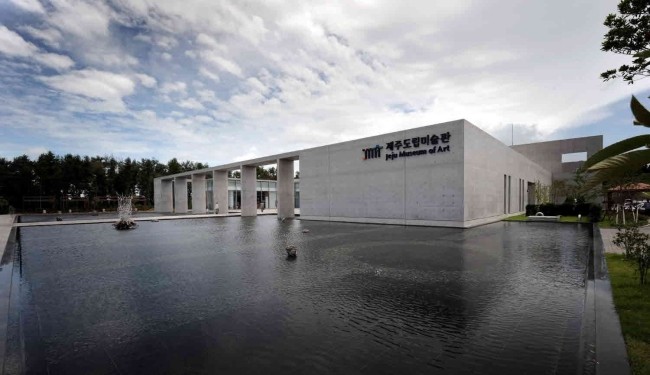| |
 |
|
| Jeju Museum of Art |
Jeju Biennale 2020 will be held under the theme of “Halmang,” which symbolizes life and tolerance.
The Jeju Biennale 2020, hosted and organized by the Jeju Museum of Art (Director Choe Jeong-ju), will be in full swing on June 17th, with 70 artists from 20 countries participating in six spaces.
The second Jeju Biennale, since the first Biennale in 2017, is the largest international art event hosted in Jeju. The period spans 89 days from June 17 to September 13.
“Halmang,” the theme of the event, refers to “big, many, and powerful,” which focuses on establishing Jeju’s distinguished identity through stories that embody locality and imagination, reflecting the flexible and ever-changing nature of the island.
To this end, the 2020 Jeju Biennale Advisory Committee was consulted to finally select participating artists that are in line with the theme and the direction. Around 70 artists from 20 nations around the world, including Korea, were invited.
The big theme of “Halmang” is expected to become a major keyword that expresses not only Jeju but other regions and temporalities by converging Jeju's characteristics with modern contemporary art.
The program also includes a colloquium where visitors and artists discuss the region and the arts. To accommodate various audiences, the organizers will provide audio guide services in standard Korean, English, and Jeju dialect to capture the continuity and locality of Jeju Biennale.
The participants selected for the event this year are 70 artists from 20 countries who will present various new and existing works, such as installations, visual media, flat screen, and performances.
“We aimed to build a platform that discusses the contemporary cultural and art ecosystem in Jeju, through a combination of arts, including cultural resources, natural resources, and urban resources, and to expand and reproduce cultural assets deeply rooted in Jeju society,” said Kim In-seon, art director of the 2020 Jeju Biennale.
The Biennale space is largely divided into three districts: the original city center of Jeju, Jeju Museum of Art, as well as Jeju Museum of Contemporary Art and Medicinal Plants Processing Center in Jeoji-ri. More specifically, these are divided into six places.
The main exhibition spaces, the Jeju Museum of Art and Jeju Museum of Contemporary Art, Sanjicheon Gallery in the original Jeju city center area, the Sanjicheon Observatory in Sanpo Square, Gossi House and Jeoji-ri, are looking forward to revitalizing the area as they host the visitors to the event.
Works of world-renowned masters Joan Jonas (USA) and Adrian Phiffer (USA), as well as up-and-coming global artists such as Thao Nguyen Phan (Vietnam) and Laure Prouvost (France) will be presented here for the first time.
Laure Prouvost is an outstanding French artist in biennales who is currently leading the trend of international modern art, and Joan Jonas is a pioneer of American visual arts and a master of performance art. They will reveal new drawings that have never been introduced to the world.
Korean artists, including Kang Yo-bae and Baek Kwang-ik, the eminent artists of Jeju, as well as Lee Su-gyeong, Jang Seung-min, and Gu Min-ja. Their twenty-nine pieces will embody the stories of Jeju.
Lee Su-gyeong, an artist who explores folk beliefs in images and sculptures, presents the story of Princess Bari in a video format. She focuses on the growth of the princess as a proactive, independent woman as she travels around to find medicine for her sick parents.
Baek Kwang-ik is a senior artist working in Jeju. In this exhibition, he will select works that reflect the characteristics of Jeju Island as opposed to showcasing recent works.
Also, in cooperation with local researchers, artists, and archive institutions, the event will examine the possibility of developing Jeju’s art with a new perspective.
For the participating artists in 2020 Jeju Biennale’s main exhibition, the proportion of domestic and foreign artists was set at 50% each. Overseas artists come from
21 countries, including eight Asian countries, two North American countries, and more from Europe and the Middle East.
In particular, the share of Korean (especially Jeju) and female artists has increased. 32 of the 49 participating artists are women, and the ratio of new works is also over 40%.
"The Jeju Biennale this year has a dynamic range of participation, including new pieces, Jeju artists, and new artists,” said Kim In-seon, art director of the 2020 Jeju Biennale. “We strived to create a high-quality exhibition, and to escape the image that the event is something difficult to grasp, we tried to enhance the understanding of artworks and familiarize the exhibits to our visitors," she added. |




















